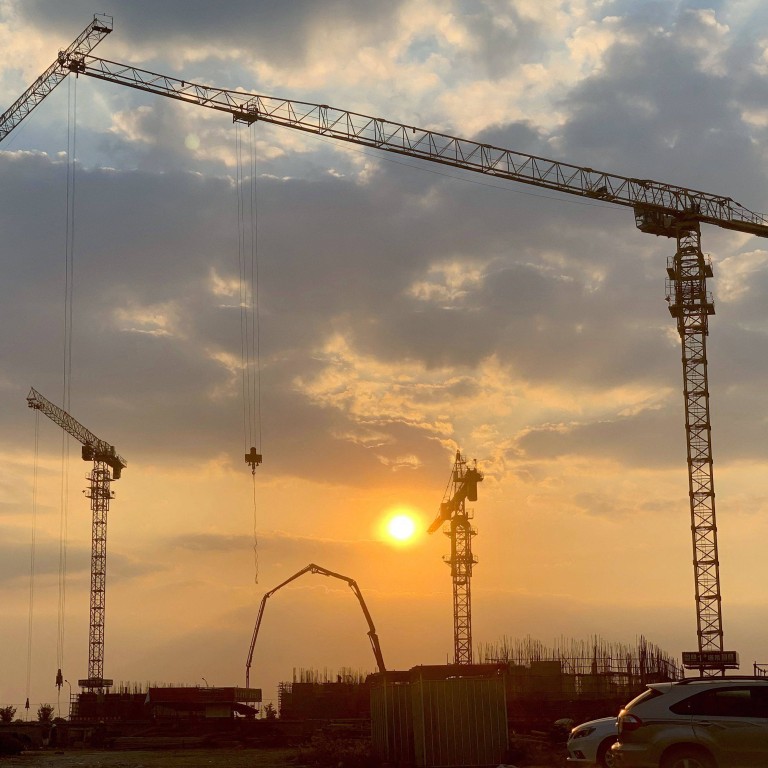
‘Turning point’ for China’s property developers: Beijing measures to ease credit crunch, stabilise sector, analysts say
- The most aggressive policy moves so far should ‘ease developers’ liquidity pressure markedly in the near term’, says a CGS-CIMB Securities analyst
- Overall China will inject 1.3 trillion yuan (US$184 billion) into the property sector, according to investment bank Jefferies
“It is the most aggressive policy so far by regulators to save the property market in China,” said Raymond Cheng, managing director of CGS-CIMB Securities. “Overall, we assess that these policies, if implemented, should be able to ease developers’ liquidity pressure markedly in the near term.”

Overall China will inject 1.3 trillion yuan into the property sector, according to a report from investment bank Jefferies on Monday. UBS estimates the number closer to 1 trillion yuan, including bank loans to local governments to inject into unfinished projects, commercial banks’ ancillary lending for unfinished projects, investments into property-company bonds and credit extensions for matured loans.
The measures “focus on providing financing support to property developers, to ensure house delivery, to help dispose of risky projects, to homebuyers with liquidity difficulties, and for home rental projects”, Jeffries analysts led by Shujin Chen said in the company’s report. “It also extends the grace period for banks to fulfill the property/mortgage cap, a critical move to reduce banks’ concerns when increasing mortgage and property-development loans.”
Given the moves, property sales and starts should stabilise in the next few months on a seasonally adjusted basis and rebound sequentially thereafter, the UBS report said. “We therefore see property being much less of a drag to [gross domestic product] growth in 2023,” the report added.
A measure allowing developers to extend by a year their short-term debts, which account for between 20 and 30 per cent of developers’ total debts, will be especially helpful, Cheng said.
Country Garden, Longfor propel Hang Seng Index higher
“Lifting up the restriction for banks’ exposure to the property sector is a surprise to us and suggests regulators’ keen intention to solve the sector’s issues,” Cheng said.
The policy allows commercial banks to provide additional funding to special loans for project-completion purposes and adds that these banks will not incur responsibility in case of defaults, Cheng said. This measure should help restart halted construction projects.
Only two of the 16 measures outlined by PBOC and CBIRC on Friday are new policies to ease the liquidity pressure on developers, brokerage UOB Kay Hian said in a report issued on Monday. Most of the others reiterate or fine-tune the implementation details of existing policies, and a couple target construction enterprises or non-traditional developers (such as elderly housing and rental housing).
Nevertheless, UOB sounded a cautiously optimistic tone.
“We think the improved implementation of supply-side policy will be a good start to drive a sector rebound,” the report said. “However, we believe the recovery of [privately owned enterprises] financing channels will be a gradual and slow process, thus downward pressure on the demand side remains.”
Longfor taps China’s bond support platform, sending shares soaring
The latest measures coincided on Friday with a sweeping set of policy moves to recalibrate Beijing’s pandemic response. Officials outlined a 20-point playbook aimed at reducing the economic and social impact of containing the coronavirus.
China’s US$2.4 trillion new-home market remains fragile, and property debt defaults have surged this year. Price declines in the existing-home market were the most extreme in almost eight years in September, according to the latest official data. At banks, the proportion of bad loans related to property has surged to 30 per cent, according to Citigroup estimates.
Authorities have sought to defuse the property crisis with a raft of measures in the past few months, including cutting interest rates, urging major banks to extend 1 trillion yuan of financing in the final months of the year, and offering special loans through policy banks to ensure property projects are delivered.

